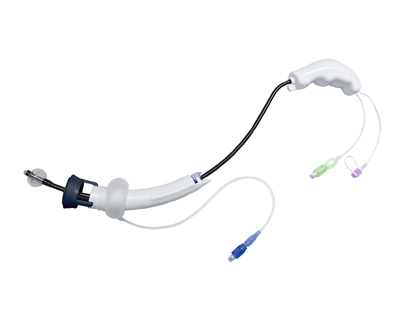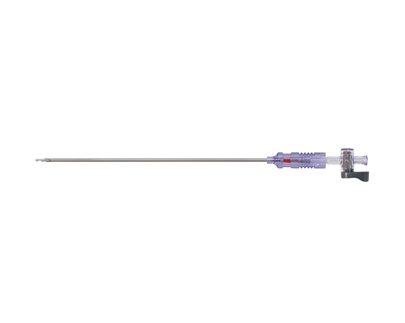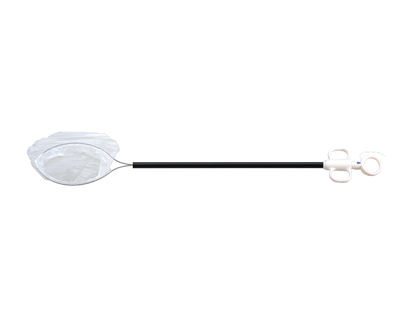Determining Whether the Abdominal Needle Has Penetrated the Abdominal Cavity
The method to determine whether the pneumoperitoneum needle has entered the peritoneal cavity
If there is a significant sense of two breaks, this usually indicates that the pneumoperitoneum needle has entered the abdominal cavity.
There are also other clinical methods to determine whether the pneumoperitoneum needle has safely entered the peritoneal cavity. For example, observing the abdominal pressure reading on the pneumoperitoneum machine is a method that the author often uses. After the inflation tube is connected to the pneumoperitoneum needle, the initial pressure is negative (not necessarily always present), and as inflation proceeds, the reading slowly rises, indicating that the pneumoperitoneum needle has entered the peritoneal cavity. If at the beginning of inflation, the reading already reaches 15 mmHg or more, and after adjusting the direction of the pneumoperitoneum needle, the reading still does not decrease, and the inflation rate slows or stops, then it is very probable that the tip of the pneumoperitoneum needle is still in the abdominal wall tissue.
Another method, which is mentioned in many related books, is to use a syringe filled with physiological saline to connect to the pneumoperitoneum needle for determination. The method is to take a 5-10 ml syringe, fill it with physiological saline, and connect it to the pneumoperitoneum needle. Continue withdrawing until the piston is pulled out and observe whether blood or other fluids are withdrawn. After the piston is pulled out, if the pneumoperitoneum needle has already entered the peritoneal cavity, the water in the syringe slowly flows in, and the level of liquid in the syringe steadily decreases. If the intraperitoneal gas needle has not completely entered the peritoneal cavity and the needle tip is still in the abdominal wall tissue, then the liquid level in the syringe will not smoothly decrease. Although this method seems ideal, its practical value still needs further discussion. If penetration occurs in the blood vessels, although this rarely happens, it generally enters the large blood vessels in the abdomen, and blood will spurt out of the puncture needle without the need for withdrawal; if it penetrates into the intestine, the liquid level in the syringe should also decrease. In these critical situations, the value of this method is mostly insignificant.
Surgeons are often more concerned about the pneumoperitoneum needle entering the intestine. One method is to connect the syringe to the pneumoperitoneum needle, and if intestinal fluid is withdrawn, it can be determined. However, if no fluid is withdrawn, does that mean it has not entered the intestine? If fluid is withdrawn, how to distinguish whether it is intraperitoneal fluid or intestinal fluid? For those who have a higher risk of puncture entering the intestine due to adhesions on the abdominal wall, the safest method is to use an open-ended Troca. Of course, this method is also the most troublesome.
Tips for using the pneumoperitoneum needle
The puncture site of the intraperitoneal gas needle is often the site where the first Troca is placed, but this is not absolute. If the patient is obese, has loose skin, and the surgery requires the Troca lens to be placed on the navel, it is likely that the gas needle will still not reach the peritoneal cavity after it is completely inserted. In this case, in addition to replacing a longer pneumoperitoneum needle, another feasible solution is to enter the pneumoperitoneum needle at the umbilical site, where the abdomen is thinnest and has almost no adipose tissue, making it easier to enter the peritoneal cavity. After reaching the set intra-abdominal pressure, the Troca can be inserted at the navel position, when the abdominal pressure supports the abdominal wall fat outwards facilitating Troca insertion.



